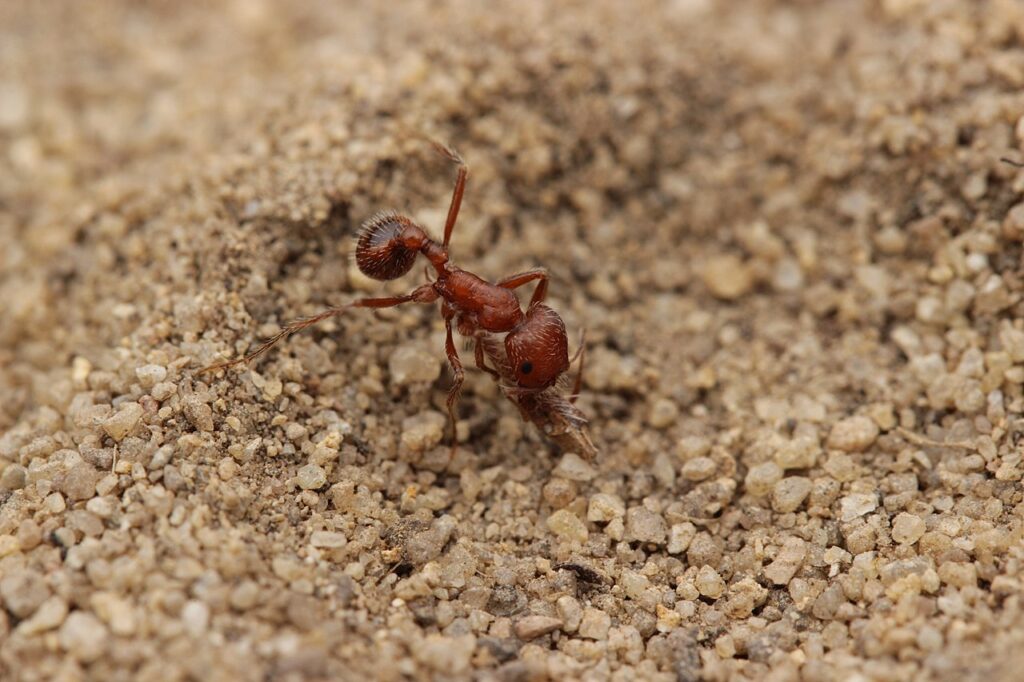
Identification
Harvester ants, specifically the species Pogonomyrmex badius, are a type of ant commonly found in dry, open areas. They are 6.5 to 10 mm long and typically range in color from red to dark brown or black. A unique feature of these ants is the long hairs that form a “brush” under their chins. They prefer dry, exposed soil and are known for clearing vegetation around their nest openings, creating distinct bare patches. Unlike some ant species, harvester ants do not establish colonies indoors, making them less of a nuisance within homes.
Habitat and Diet
These ants thrive in dry, open areas with minimal vegetation. The bare patches around their nest openings are often a key indicator of their presence. Harvester ants primarily feed on small seeds and insects, gathering their food close to their nests. They are social insects and have a highly organized colony structure, similar to other ant species. Colonies are composed of a single queen and many workers. The queen’s main role is to reproduce, while the workers are responsible for foraging, nest maintenance, and protecting the colony.
Control Measures for Harvester Ants
Although harvester ants do not generally pose problems inside homes, their presence can disrupt lawns and gardens. If these ants become a nuisance, the following control measures are recommended:
- Direct Insecticide Application: Apply insecticide around the nest entrance and across the surrounding mound area. This ensures foraging ants come into contact with the pesticide and carry it back to the nest, affecting the colony at its source.
- Residual Treatment: Since harvester ants generally forage within 50 feet of their nest, applying a residual insecticide within this area can help control their activity. It reduces the chance of ants establishing new colonies nearby.
- Burrow Fumigation: If insecticides are not effective, liquid burrow fumigants can be an option. These fumigants penetrate the nest structure, reaching areas where conventional insecticides might not.
Interesting Facts about Harvester Ants
Harvester ants play a unique role in their ecosystems. Their nests aerate the soil, which can benefit nearby plants, and they contribute to seed dispersion. However, their defensive bites can cause minor skin irritation, especially if they feel threatened. For homeowners dealing with these ants on their property, effective control methods are available, though eradication is usually not necessary unless they pose a direct nuisance.
While generally not invasive, harvester ants can disrupt outdoor spaces when present in large numbers. Regular maintenance and control measures can help ensure their impact is minimized while still allowing them to perform their beneficial ecological roles.
